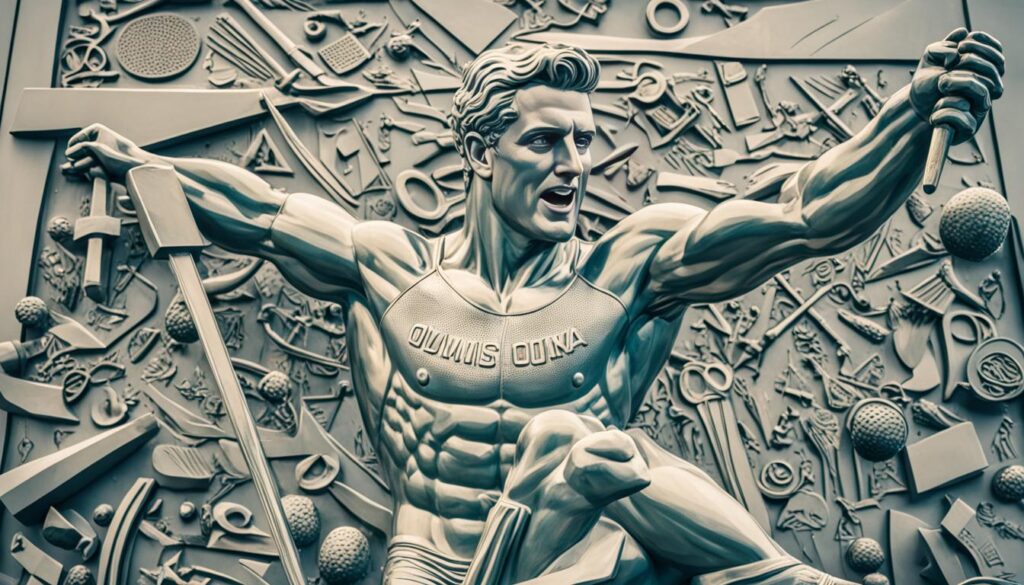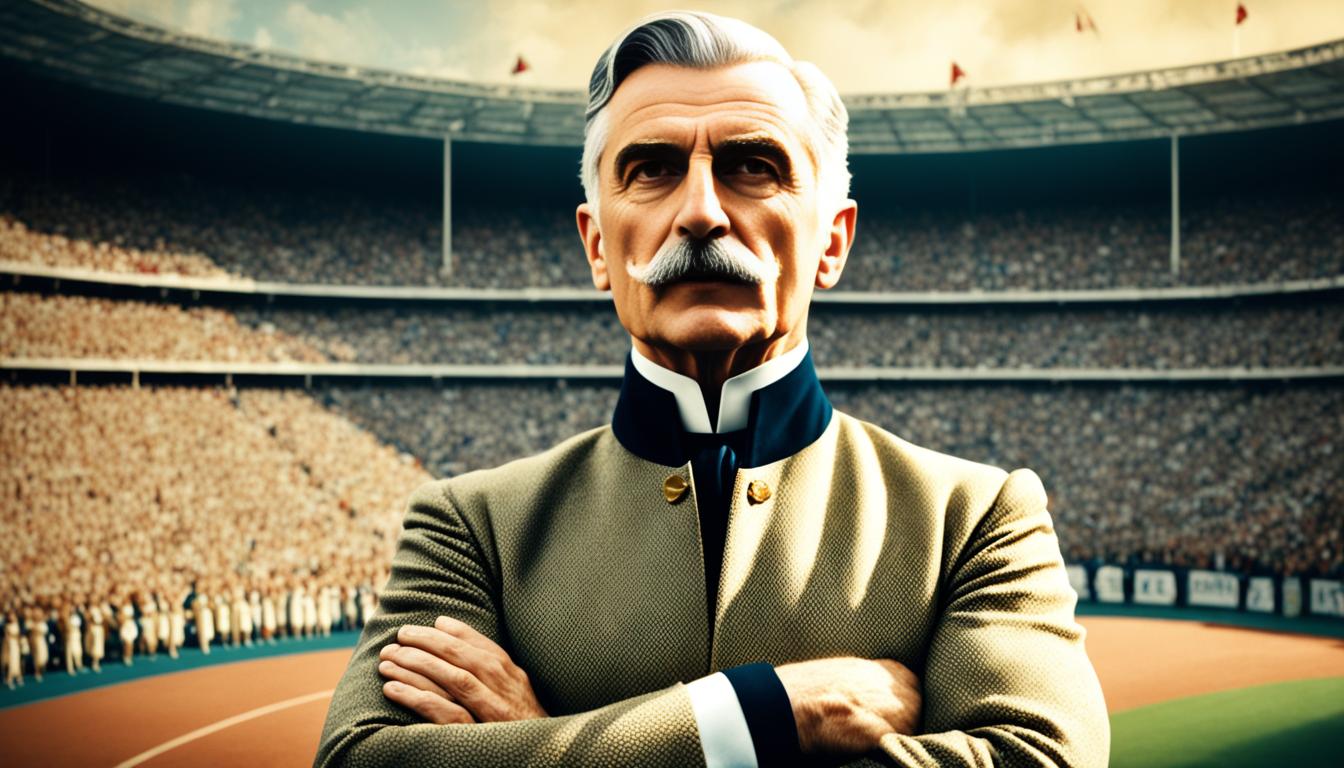Did you know the Olympics once gave medals for art? From 1912 to 1948, artists competed alongside athletes. This unique blend of art and sport was the idea of Pierre de Coubertin, the Olympic Movement’s founder.
Olympic art competitions had five categories: architecture, literature, music, painting, and sculpture. Artists worldwide vied for Olympic glory. Experts judged their sports-inspired creations.
These contests aimed to connect athletes, artists, and spectators. They elevated the Games to celebrate human excellence in all forms.
Pierre de Coubertin, a French educator, wanted to revive the Greek ideal of well-rounded individuals. He believed Olympics should showcase both athletic and artistic talents.
Coubertin’s vision honored the cultural heritage of ancient Greek Olympics. In those times, art and sport were closely linked.
This integration of art competitions was a nod to ancient Greece. It reflected the original Olympics’ spirit of combining physical and creative pursuits.
Key Takeaways
- From 1912 to 1948, the Olympic Games awarded medals for art competitions alongside athletic events.
- The art competitions were divided into five categories: architecture, literature, music, painting, and sculpture.
- Pierre de Coubertin, the founder of the modern Olympic Games, envisioned a harmonious blend of art and sport.
- The inclusion of art medals aimed to foster a connection between athletes, artists, and spectators.
- The art competitions were a nod to the ancient Greek Olympics, where art and sport were closely intertwined.
The Forgotten Olympic Art Competitions
Olympic art competitions were a unique part of the modern Olympic Games. These events showcased artists’ talents from around the world. They offered a platform for blending sports and arts.
American Walter Winans was a notable participant in these competitions. He had already won two Olympic medals in shooting. In 1912, Winans claimed the first Olympic gold medal for sculpture with “An American Trotter.”
The art competitions attracted diverse talented individuals. Italian sculptor Rembrandt Bugatti was known for his exquisite animal sculptures. American illustrator Percy Crosby created the popular comic strip “Skippy.”
Irish author Oliver St. John Gogarty, James Joyce’s close friend, also participated. Dutch painter Isaac Israëls, son of famous impressionist Jozef Israëls, showcased his artistic skills too.
However, the Olympic art competitions faced skepticism from the art world. Critics argued that outsiders initiated these events. They claimed the sports theme requirement limited artistic expression.
Some artists felt the competitions weren’t worth their time. This led to a lack of recognition for the events and participants.
The Evolution of Olympic Art Competitions
Olympic art competitions changed significantly from 1912 to 1948. Initially, each art form had a single category. As they grew popular, subcategories were added to accommodate diverse artistic submissions.
In 1928, literature was split into dramatic, epic, and lyric subcategories. This allowed for more nuanced evaluation of literary works. Music was divided into orchestral, instrumental, and solo/choral subcategories in 1936.

Painting evolved to include drawings, graphic arts, and paintings subcategories. This change gave a broader representation of visual arts. Architecture introduced a town planning category in 1928, highlighting urban design’s growing importance.
Sculpture was later divided into statues, reliefs, and medals subcategories. These changes created a more inclusive platform for artists. The evolution of communication technology also helped develop Olympic art competitions.
The competitions showcased worldwide artistic talent and creativity. They cemented art’s role in the Olympic experience. The category changes reflected the art world’s evolving landscape and diverse forms of expression.
Olympic Art Medals: The End of an Era
In 1952, Avery Brundage became IOC president, challenging Olympic art competitions. He believed Olympics should be for amateur athletes only. Brundage saw artists’ participation as a threat to this ideal.
He argued that artists selling their work contradicted the amateur spirit. Winning an Olympic medal could potentially advertise their work. This stance sparked heated debates within the IOC.
Brundage had once entered a literary piece in the 1932 Games. Yet, he led a campaign against art competitions after 1948. Many IOC members recognized the value of these competitions.
After years of debate, the IOC replaced art competitions with exhibitions. This change began with the 1956 Games. It ended the era of Olympic art medals.
Artists could no longer compete for gold, silver, and bronze. The shift reflected the IOC’s evolving priorities under Brundage’s leadership. Art exhibitions continued, but without the competitive element.
The Legacy of Olympic Art Competitions
The Olympic art competitions ended after 1948, but their impact lives on. The Olympic Charter now requires a Cultural Olympiad alongside sporting events. This program promotes harmony and friendship among participants and attendees.
Since 2004, the IOC has held a Sport and Art Contest with each summer Games. Artists submit works inspired by sport and Olympic values. Winners receive cash prizes, and the best works are displayed during the Games.
This ongoing connection between sport and art honors the original competitions’ legacy. It keeps Pierre de Coubertin’s vision alive, blending athletics and creativity. The Cultural Olympiad and Art Contest ensure art remains central to the Olympic experience.
These initiatives remind us of the Olympic art competitions’ rich history. They showcase the enduring bond between sport and art. As the Olympic Movement grows, this relationship remains an essential part of the Games.

Leave a Reply